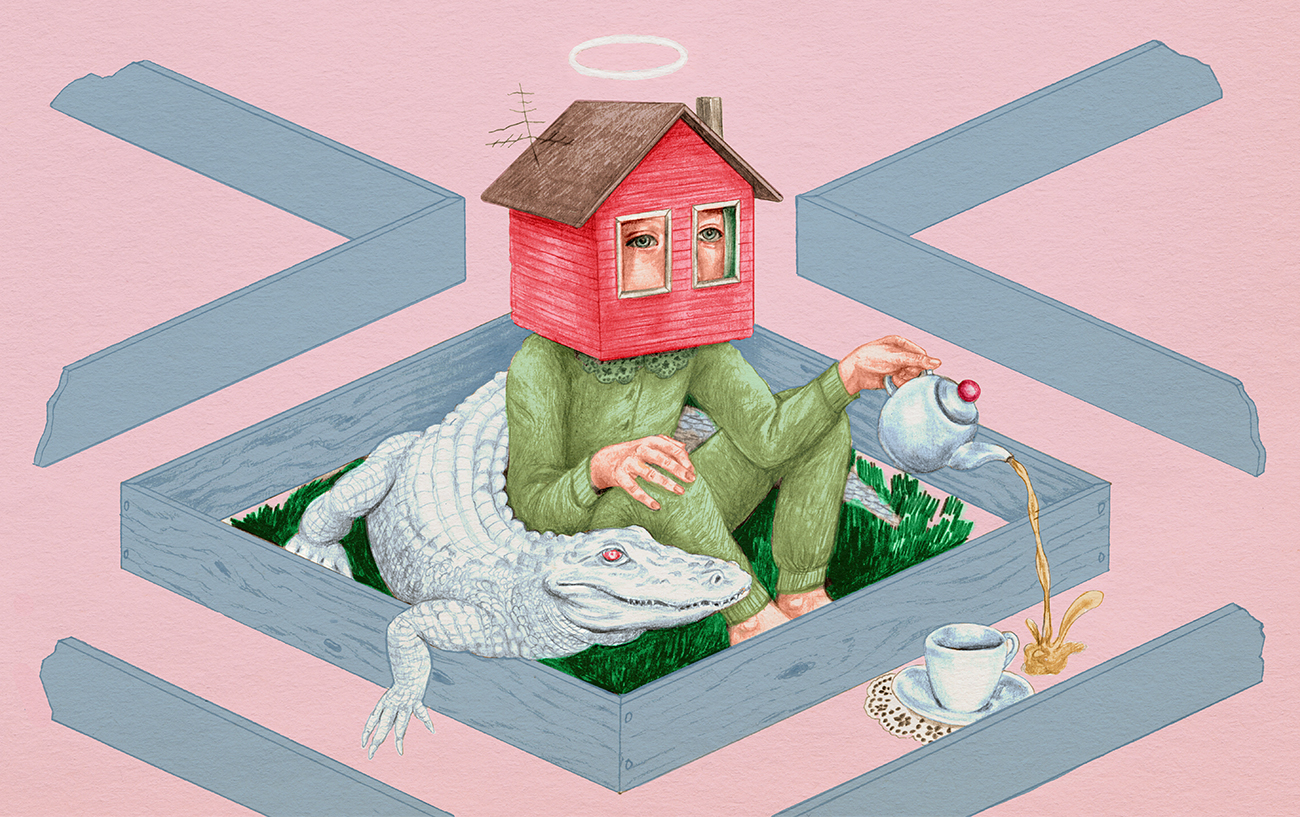
Between Borders, Home and Welcome: Between the Saint and the Stranger
By Irina Poleshchuk | Image Pauliina Mäkelä
Our life is always in search of a narrative. By telling a narrative we bring symbolic order and redefine ourselves. As Richard Kearny puts it, “we may, therefore, agree with the poet who described narrative as a stay against confusion. For the storytelling impulse is, and always has been, a desire for a certain ‘unity of life’”.¹ I came across one of the fascinating narratives of our social history in a photo published by different media platforms. The photo raised a controversy over what it is actually depicting. One of the possible interpretations is that the photo tells us the story of an elderly Palestinian couple looking at the house they once lived in, which is now occupied by a family from Brooklyn. However, certain facts have been questioned, such as the claim that the other couple is from Brooklyn. It has also been suggested, that the house was never owned by the Palestinian couple. These suspicions can be found in a fact-checker’s post.
What is interesting in this photo is that two couples are captured in the moment, facing each other, each sending a nonverbal message: “What are you doing here?” One couple is in the yard, and the other has stopped for a while to look at the entrance of the house. The couple in the house is probably not inviting the elderly Palestinian couple inside; they are looking out from the gate while maintaining invisible borders. The first impression immediately gives a feeling of ambiguity to the concept of hospitality, to what it means to welcome somebody to one’s own place and property. Is there an anticipation of hostility?
Hospitality, borders, hostility – all these well-known and widely used concepts have received a lot of attention in the history of European philosophy and in modern Western ethics. Immanuel Kant was the one who elaborated the concept of hospitality which is widely used and cited. The first approach to this concept shows that hospitality reveals the various ways we welcome and treat others, particularly strangers in our home land. The Kantian interpretation of hospitality clearly outlines the framework of the contemporary legal system. As Kant writes: “Hospitality signifies the claim of a stranger entering foreign territory to be treated by its owner without hostility”.² This idea includes ownership, territory, relations to foreigners, the relation of us/them. For Kant universal hospitality is a way to keep the peace, or, in other words, a way to sort out hostilities. This understanding of hospitality also implies an acceptance of the presence of the stranger and of the other in one’s own homeland and house, who is respecting borders and occupying the place with the permission of the one who inhabits it. This perspective emerges from the point of view of ownership, from the one who owns the place, including the borders, rather than from the one who has no place, who is outlawed and cast out from any social environment.
‘‘Our life is always in search of a narrative. By telling a narrative we bring symbolic order and redefine ourselves.’’
The ideas of property and ownership are the focal points for European hospitality and, probably also in a more general sense, for our civilization. Only something which is owned but also enjoyed can be shared and can welcome the stranger. Sharing and being hospitable include territory, land, earth, borders, feeding, and welcoming, but they also consist of laws which demarcate and problematize the relationship between the self and the other, between myself and the stranger, between what is mine and what is the other’s. The legal system of Europe was built on this Kantian idea of universal hospitality, of defining domestic and international scopes of possible political action.
Contrary to this view, Emmanuel Levinas has introduced the concept of welcoming as a way to be hospitable. It is seen as a precondition of the relation with the stranger. Hospitality here is not a universal relation but always unique to the stranger. Exactly this ethical ambiguity of the two concepts of welcoming was captured in this photo: the Kantian welcome based on ownership and the Levinasian welcome which is always prior to the self, to the I and to the dwelling. This welcoming of the stranger comes before I can enjoy my home and my land, and it is born before the relation of us/them. The eternal conflict which was already written in the history of the American nation – America and its other – continues to return periodically in different geopolitical contexts, when American as well as European narratives are called upon to build up a national identity with strong opposition to strangers. This picture accentuates once again a historically long-lasting dogmatic polarization between us and them, the binary opposition separating ourselves as “saints” from others as “strangers”. However, the question remains: who is the stranger and who is the saint in this image? The photo suggests several versions of truth. The controversial message is still present, and the image refuses all unequivocal answers. This impossibility of relying on any “truth” remains one of the main features of our current era, that is, the “post-truth” era.
What does it mean to tell this visual story of borders, hospitality, and welcome? Richard Kearny writes that to recount a story is “to provide symbolic solutions to contradictions which could not be solved empirically. In the process, reality itself would find itself miraculously transformed”.³ Our visual stories are told to address different kinds of suffering. Our pain, losses, despair, and confusion are lived through once again in stories. Telling a story and recounting the visual narrative are intended to fill the void which was created in us by the hostility of the relation of us/them.


Munoz Gonzalez David
Great article! Thanks so much ;-)